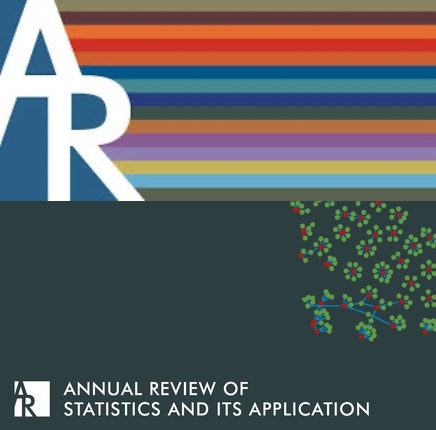第二代功能数据
IF 8.7
1区 数学
Q1 MATHEMATICS, INTERDISCIPLINARY APPLICATIONS
Annual Review of Statistics and Its Application
Pub Date : 2023-03-10
DOI:10.1146/annurev-statistics-032921-033726
引用次数: 3
摘要
来自不同领域的现代研究根据多变量、纵向、空间或时间序列设计记录了多种功能观测结果。我们将这些数据称为第二代函数数据,因为它们的分析与典型的假设函数独立性的函数数据分析不同,考虑了函数观测之间的复杂依赖关系,需要更先进的方法。在本文中,我们概述了用于分析第二代功能数据的技术,重点强调了与独立功能数据相比,由于需要对复杂依赖进行建模而产生的关键方法复杂性。对于提出的四种类型的第二代功能数据——多元功能数据、纵向功能数据、功能时间序列和空间功能数据——中的每一种,我们讨论了如何将广泛流行的功能主成分分析扩展到这些设置中,以定义、识别变化的主要方向,并描述功能之间的依赖性。除了建模,我们还讨论了预测、统计推断和聚类的应用。我们以讨论这一领域的未来方向作为结束。本文章由计算机程序翻译,如有差异,请以英文原文为准。
Second-Generation Functional Data
Modern studies from a variety of fields record multiple functional observations according to either multivariate, longitudinal, spatial, or time series designs. We refer to such data as second-generation functional data because their analysis—unlike typical functional data analysis, which assumes independence of the functions—accounts for the complex dependence between the functional observations and requires more advanced methods. In this article, we provide an overview of the techniques for analyzing second-generation functional data with a focus on highlighting the key methodological intricacies that stem from the need for modeling complex dependence, compared with independent functional data. For each of the four types of second-generation functional data presented—multivariate functional data, longitudinal functional data, functional time series and spatially functional data—we discuss how the widely popular functional principal component analysis can be extended to these settings to define, identify main directions of variation, and describe dependence among the functions. In addition to modeling, we also discuss prediction, statistical inference, and application to clustering. We close by discussing future directions in this area.
求助全文
通过发布文献求助,成功后即可免费获取论文全文。
去求助
来源期刊

Annual Review of Statistics and Its Application
MATHEMATICS, INTERDISCIPLINARY APPLICATIONS-STATISTICS & PROBABILITY
CiteScore
13.40
自引率
1.30%
发文量
29
期刊介绍:
The Annual Review of Statistics and Its Application publishes comprehensive review articles focusing on methodological advancements in statistics and the utilization of computational tools facilitating these advancements. It is abstracted and indexed in Scopus, Science Citation Index Expanded, and Inspec.
 求助内容:
求助内容: 应助结果提醒方式:
应助结果提醒方式:


